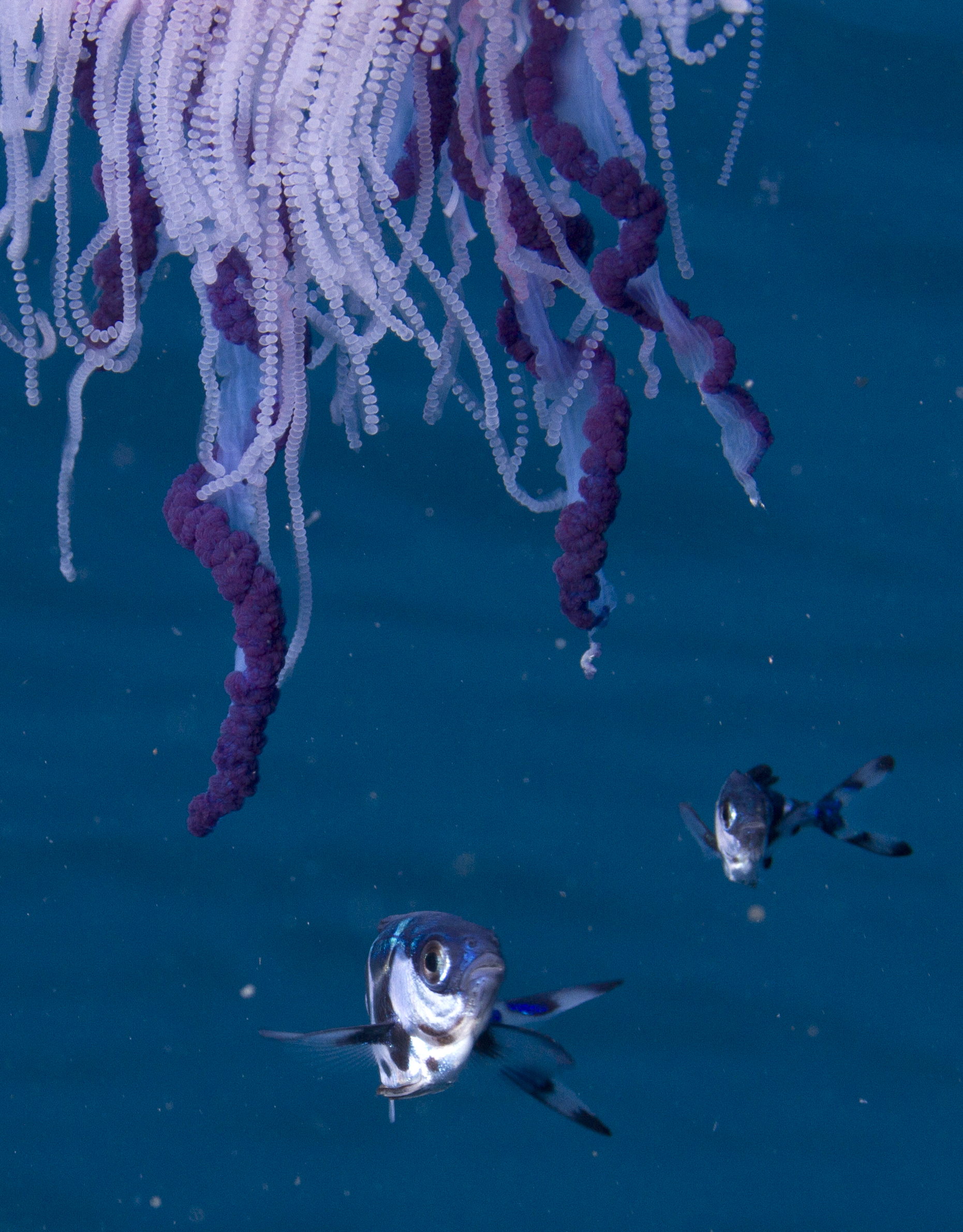
Nomeus gronovii
FAMILY
Nomeidae
TAXONOMY
Gobius gronovii Gmelin, 1788, eastern Atlantic.
OTHER COMMON NAMES
English: Bluebottle fish, shepherd fish; Spanish: Pastorcillo,
Pez azul.
PHYSICAL CHARACTERISTICS
Standard length 13.7 in (35 cm). Head somewhat tall, body
tallest at level of pelvic fins, tapering posteriorly; dorsal fin
continuous, originating at midbody length, with 9–12 spines
and 25–27 rays (IX–XII, 24–28); pectoral fins elongate, with
21–23 rays; caudal fin forked, with some 15 rays; anal fin with
two spines and 24–29 rays (I–II, 24–26); pelvic fins very long
and prominent, reaching posteriorly to level of pectoral fin
extremities, with one spine and five rays (I, 5); eyes large; no
teeth on tongue. Juveniles have vertical, dark blue and broad
bands, with blue blotches on head and fins; adults have irregular
blue blotches on body, head, and fins; background color
silvery, pelvic and dorsal fins black. Larger adults more uniformly
dark in color.
DISTRIBUTION
Tropical and warm temperate waters of Atlantic, Pacific, and
Indian Oceans.
HABITAT
Pelagic offshore, usually warm waters, commonly found in association
with the siphonophore Portuguese man-of-war
(Physalia), but larger adults may live independently in deeper
waters. Juveniles may be found pelagically in waters 98 ft (30
m) deep.
BEHAVIOR
Usually found in large numbers living underneath the bell of
the Portuguese man-of-war, swimming in and out among its
tentacles. The mottled color pattern mimics the tentacles of
Physalia. It lives commensally by being resistant to the venom
of the siphonophore.
FEEDING ECOLOGY AND DIET
Feeds on the tentacles and gonads of the Portuguese man-ofwar,
zooplankton, and other soft-bodied jellyfishes. Sometimes
eaten by its host.
REPRODUCTIVE BIOLOGY
Eggs and preflexion larvae are unknown; postflexion larvae as
small as 0.27 in (0.7 cm) have been recorded, and adult form is
mostly attained by 0.9 in (2.5 cm). Other aspects of its reproduction
are unknown, but as with other stromateoids, eggs and
larvae are pelagic and they are probably broadcast spawners.
Small individuals of 0.39 in (1 cm) have been found in association
with the Portuguese man-of-war, indicating that this association
forms early in life.
CONSERVATION STATUS
Not threatened.
SIGNIFICANCE TO HUMANS
Of minor commercial importance, due to infrequent
fishing.
Other popular Animals
Photo Gallery of - Man-of-war fish

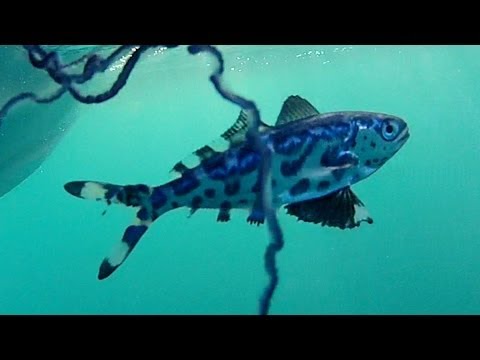
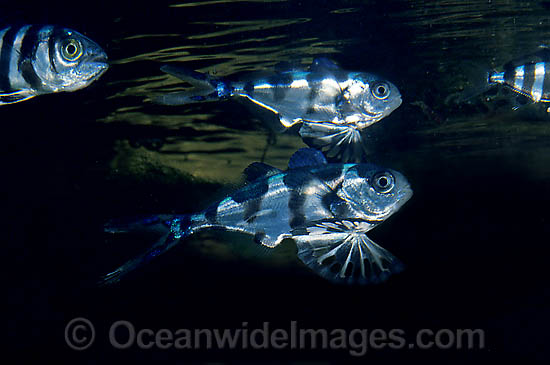
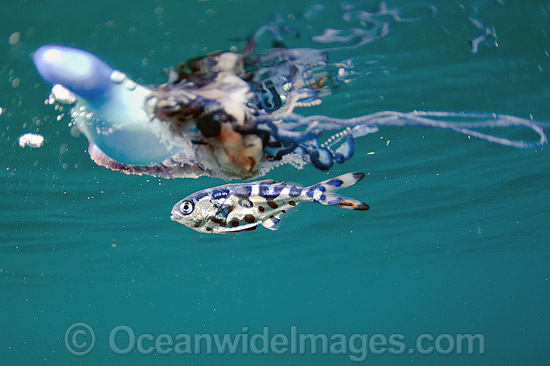
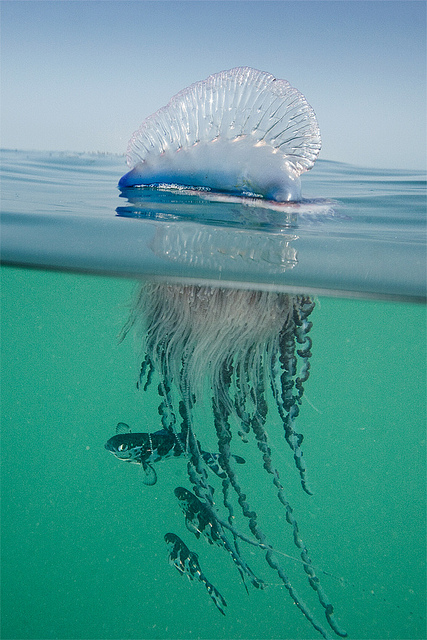
 Animalia Life
Animalia Life